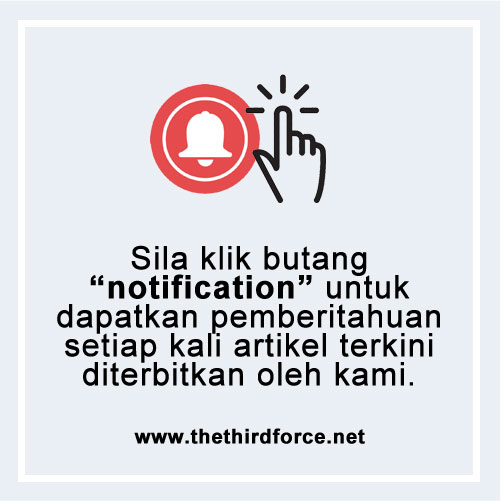
Fake news isn’t harmless entertainment. It helps fake news sites make money, casts doubt on legitimate businesses and diverts resources, like the police and other emergency services, away from an actual crisis
DON’T believe everything you read.
With disinformation flooding social media, users must be more responsible with what they share, insist media houses, journalists, policymakers and industry players.
Speaking at the “Keep it Real: Truth and Trust in the Media” conference in Singapore, stakeholders who attended a forum and workshops on June 19 and 20 discussed initiatives for fighting the spread of misinformation and improving media literacy in Asia.
Describing 2016 as a year of rumours, half-truths and lies, Singapore Media Literacy Council chairman Lock Wai Han says it’s little wonder why post-truth was voted “word of the year” by Oxford Dictionaries.
People share fake news to create value for their friends. They don’t care if what they’re sharing is real or fake. That’s why they have to be educated, he opines.
People, he says, must realise that fake news isn’t harmless entertainment. It helps fake news sites make money, casts doubt on legitimate businesses and diverts resources, like the police and other emergency services, away from an actual crisis.
Quoting the council’s studies, he says the majority of Internet users aged 15 to 60 only read headlines or bite-size stories.
“We also found that 80% of children aged up to 14 have Internet access. The average age of use is six, so, it’s important to have in place strategic ways to develop users who can use and discern what they see on the Internet responsibly.”
On Wednesday, a photo of a business card with the name and image of “Datin Seri Haflin S” – wife of Tourism and Culture Minister Datuk Seri Nazri Aziz – went viral. The card, with the designation “Spouse-Minister of Tourism and Culture Malaysia”, even bore the address of the ministry’s office in Putrajaya, contact numbers and an e-mail address. Of course, it was fake.
Last month, Higher Education Minister Datuk Seri Idris Jusoh denied an online rumour of an impending increase in fees of up to 200% at public higher learning institutes, intimating the news as “fake and baseless”. Similarly, the Association of Banks in Malaysia also had to quash rumours circulating on social media about online banking and automated teller machine (ATM) services being affected by WannaCry ransomware attacks.
On May 8, The Star front-paged how social media had gone wild with clickbaits, fake news and bogus advertisements.
And, a month after fact-checking website sebenarnya.my was launched to curb the spread of fake news, Prime Minister Datuk Seri Najib Tun Razak lamented how the public was increasingly unable to distinguish fact from fiction.
For every eight servings of fake news, only one is retracted. And when people chance upon them, they get riled up instantly, but corrections don’t get as much traction, says Rappler CEO Maria A. Ressa.
Ressa, who’s also the social news network’s executive editor in the Philippines, echoes the call for media literacy, but worries that it would take too long.
“Fact-checking is a ‘thinking slow solution’ to a ‘thinking fast problem’. We need to do something now because fake news can leap from the virtual world into the real world. How much does it take to whip crowds into action? We’ve increased security because it’s that serious.”
Every country faces the scourge of conspiracy theories, Singapore Law and Home Affairs Minister K. Shanmugam points out. While misinformation isn’t new, it’s more serious now because the information ecosystem has changed dramatically.
In the echo chamber, everyone’s an expert simply because they look something up on the Internet. Like-minded individuals talk among themselves, reinforcing their beliefs. Anything that supports that belief catches on like wildfire, he says, explaining how in a post-truth world, fake news can influence millions.
(An echo chamber is an insular communication space where everyone agrees with the information and more often than not, no outside input is allowed.)
Fake news causes fear and panic, delegitimises leaders, divides societies, endangers lives and brings mistrust to the process of democracy, he says. Citing an example, he shared how a video of Muslims celebrating a cricket match victory was used to feed public anger after the 2015 Paris terror attacks.
“It only took the click of a button to change the title of the video, which went on to generate half a million views in two hours.”
According to a government poll, 75% of the participants conceded that they come across fake news occasionally, while the remainder admitted that the experience is more frequent. Facebook and WhatsApp are the main platforms for such encounters.
“A quarter share news they later discover to be false, and two-thirds can’t recognise fake news when they initially see it. This is serious,” he says, adding that a law to tackle fake news is in the pipeline.
During the conference jointly-organised by the World’s Association of Newspapers and News Publishers (Wan-Ifra) and The Straits Times, the Asia News Network (ANN), an alliance of 22 media groups in 21 countries, a checklist was drawn up to help reporters and readers identify fake news and compile a list of known sites that regularly spread such false information.
Source: The Star Online



